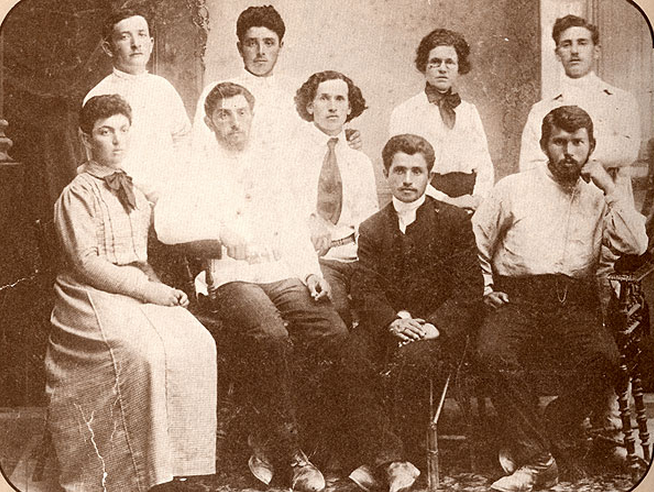October 28, 1910
Degania Alef is established as the first Kibbutz in Israel. The idea for a collectively managed agricultural settlement in the Land of Israel was not created by the founders at Degania Alef. The idea had been a part of some circles of Zionist ideology as it emerged in the late 19th century. In 1907, a group led by Manya Shochat had been given a piece of land in Sejera, which they used as a communal farm and collective community. In 1909, Arthur Ruppin, the head of the Zionist Organization office in Palestine, created a collective farm on the banks of the Kinneret (Sea of Galilee) on land whose purchase he had arranged. Despite some success, the original group dispersed after a year.
On Oct. 28, a group known as the “Hadera Commune” (some members of which are shown in the photo in 1910 before settling in Degania) arrive at Umm Juni on the Kinneret and agree to lease the land from Ruppin and the Jewish National Fund. According to the Degania website, the new workers write, “On the 25th of Tishrei 5671 (October 28th 1910), we have arrived, ten men and two women, to receive the inventory from the ‘labor conquest group.’ We have proceeded to establish an independent settlement of Jewish workers in the national homeland — a Commune.”
The group changes the name of the settlement from Umm Juni to Degania, from the Hebrew word dagan, meaning grain. The first year is a success and surpasses the previous experiments at collective farming. Within a few years, the model established at Degania is replicated, and the kibbutz movement is born.



